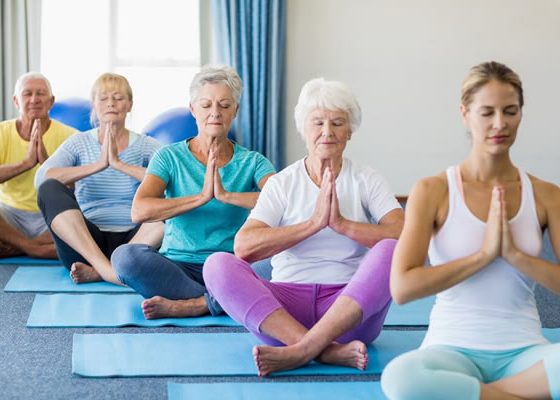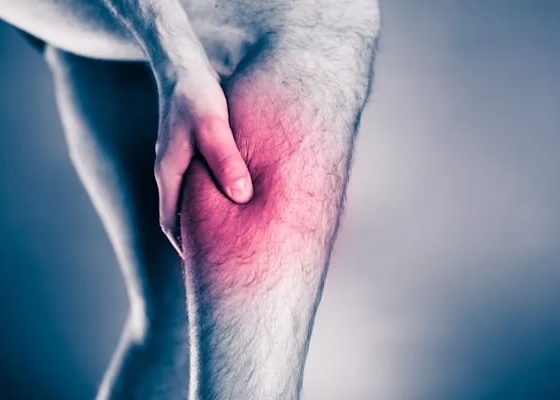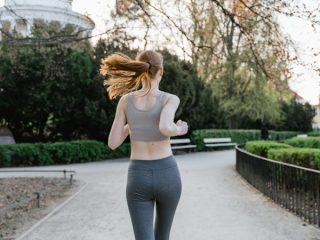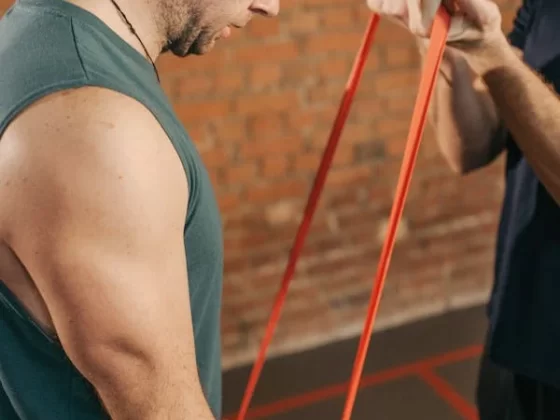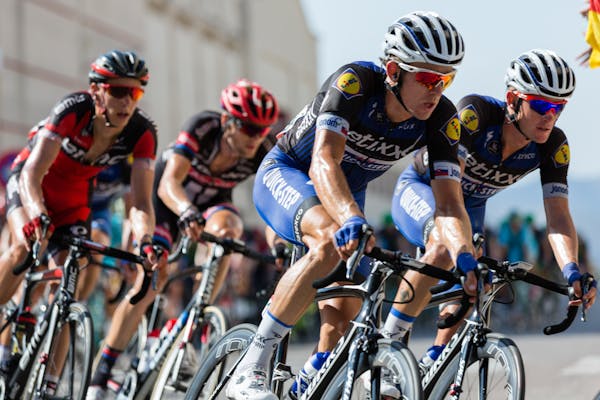
Biking for exercise is one of the best ways to improve cardiovascular health, strengthen your muscles, and lose weight. All of these bike riding benefits are possible without the pounding on your knee and hip joints that other forms of road exercise may cause. Cycling is a very popular sport as it can be tailored for any fitness level. Go bike riding alone, in a group, or as a family; it is fun indoors or out.
What is Biking?
Biking involves a bicycle, riding on roads, bike paths, mountain trails, or rough terrain. It’s often linked with mountain biking, which focuses on rugged terrains and heavy-duty bicycles. Initially, bikers used cruiser bicycles with single-speed and balloon tires. These bikes offered simplicity and comfort for leisure rides. Today, mountain bikers prefer specialized mountain bikes for off-road adventures.
How It Works
Biking offers excellent cardio benefits, burning around 400 calories per hour while strengthening lower body muscles like legs, hips, and glutes. It’s gentle on the back, hips, knees, and ankles. You can ride on roads, bike paths, or mountain trails indoors on a stationary bike or with an outdoor bike on an indoor trainer. Beginners can start on flat paths, while mountain biking provides a tougher, full-body workout engaging the upper body and core. Aim for 30-60 minutes, 3-5 days a week, starting with a warm-up of 5-10 minutes of easy pedaling, increasing speed gradually, and ending with a 5-minute cool-down.
Is It Suitable for Health Conditions?
Biking is low-impact, making it ideal for arthritis or joint injuries, strengthening leg muscles for better joint support and reduced pain. Supplement biking with core-strengthening exercises and flexibility training if you have back issues. Biking aids weight loss, benefiting conditions like diabetes, high blood pressure, high cholesterol, and heart disease. During pregnancy, opt for indoor cycling on a stationary bike for stability and safety. Consult your doctor, especially if you were an avid cyclist before pregnancy.
Bike Riding Benefits:
Burns Calories
Cycling will burn approximately 400 to 700 calories per hour, depending on the cyclist’s weight, metabolism, and intensity of the ride. Bike riding for exercise is a great way to lose weight. Riding your bike four to six days a week will maximize weight loss. Increase the intensity of your workout by planning your ride to include hills and burn more calories.
Strengthens Muscles
Bike riding for exercise builds all the muscles in the lower body, including your abdominals. Cycling will strengthen the glutes, hamstrings, quadriceps, and calves. Bike riding is gentler on your knee and hip joints than other sports like jogging or tennis. The more hills you climb on your ride, the more you will strengthen the leg muscles.
Strengthens Cardiovascular System
Bike riding is an aerobic activity, which means the heart and lungs work harder to move air and blood throughout your body. As a result, the heart and lungs will both become stronger and healthier.
Reduces Carbon Footprint & Pollution
Twenty bicycles can occupy the space of just one car, requiring only about 5 percent of the materials and energy used in car manufacturing while emitting no pollution. Additionally, bicycles offer remarkable efficiency, enabling travel at three times the speed of walking with the same energy input, equivalent to achieving 2,924 miles per gallon when considering energy expenditure per mile. This efficiency is attributed to the weight ratio, where a person is roughly six times heavier than their bike, while a car is about 20 times heavier than a person.
Furthermore, choosing cycling over other modes of transportation not only reduces one’s carbon footprint and provides a shield against pollution. Research from Imperial College London reveals that bus, taxi, and car passengers inhale significantly higher pollution levels than cyclists and pedestrians. For instance, taxi passengers may inhale over 100,000 ultrafine particles per cubic centimeter. In contrast, cyclists are exposed to only 8,000 ultrafine particles per cubic centimeter, owing to their positioning on the road and avoidance of direct exhaust smoke exposure.
Relieves Stress
Cycling offers significant benefits for mental well-being. According to Neil Shah from the Stress Management Society, it is one of the most effective stress treatments, often rivaling or surpassing medication. He underscores a wealth of scientific evidence supporting cycling’s stress-relieving properties.
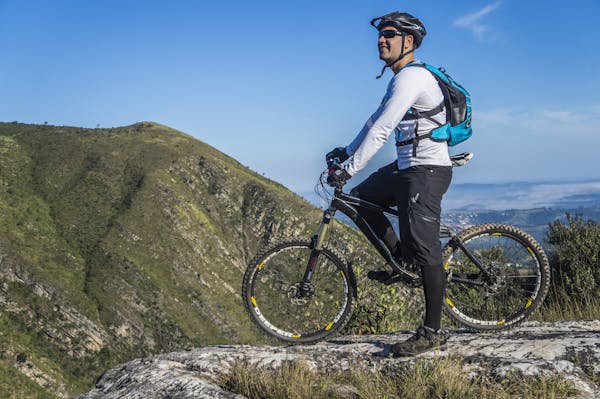
Increases Brain Power
A study conducted at UCLA demonstrated that exercise facilitates the growth of neuronal connections in the brain, enhancing overall brain function and aiding in regenerating axons damaged by nerve crush injuries. Additionally, Professor Arthur Kramer from the University of Illinois highlights that exercise boosts blood flow and oxygen to the brain, promoting receptor firing and regeneration, thereby helping to prevent conditions like Alzheimer’s. Moreover, a 2019 study revealed that cycling enhances executive functions, including planning, attention, and observation skills.
Enhances Creativity
Professionals across various fields, including writers, musicians, and artists, often turn to exercise to overcome mental blocks and make decisions, a method supported by scientific research.
A study has shown that 25 minutes of aerobic exercise can enhance creative thinking. This boost is attributed to the increased oxygen flow to the brain, particularly during crucial moments, stimulating neurons and providing mental clarity to generate inspired ideas, whether crafting a compelling line, composing a guitar riff, or executing a brush stroke.
Improved Motivation
Individuals who engaged in exercise before work or during lunch breaks showed enhancements in time and workload management. Additionally, exercising improved their motivation levels and ability to cope with stress.
Furthermore, the study noted that employees who incorporated exercise into their routine reported better interpersonal performance and found it easier to complete tasks within designated time frames.
Equipment Needed:
Cycling can be a strenuous activity in which you will sweat. Replace fluid loss by drinking water throughout your ride, whether it is indoors or out.
Outdoor Cycling
Serious cyclists spend thousands of dollars on bicycles and gear; however, a beginner can start riding on a very small budget. The essential equipment to begin cycling outdoors is a bike and a helmet. The bicycle should be comfortable enough to cycle for at least 45-minutes. This may mean spending at least a couple hundred dollars on a decent bike or searching for a used one for less. Fit your bike and helmet with a professional to make sure it is the correct size.
Indoor Cycling
Enjoy an indoor ride at home or in a gym on a recumbent bicycle. Many gyms have indoor cycling classes led by an instructor. These motivate with music and a party atmosphere. The classes generally last an hour and the instructor will guide you through a simulated bike ride, up and down hills, so you get a very realistic heart-pumping workout. The only type of equipment you might need for indoor cycling at a gym is a bicycle seat pad or cycling shorts with built in pads. Serious indoor cyclist will often purchase clipless cycling shoes.
Recommended Gear for Serious Outdoor Cyclists
Serious cyclists should consider buying the following:
- Speedometer
- Odometer
- Cushioned bike seat
- Small bicycle pump and patch kit
- Bike lock
- Padded bike shorts
- Headlight
- Fanny pack for extra gear
- Riding shoes
- Water bottle and attached holder
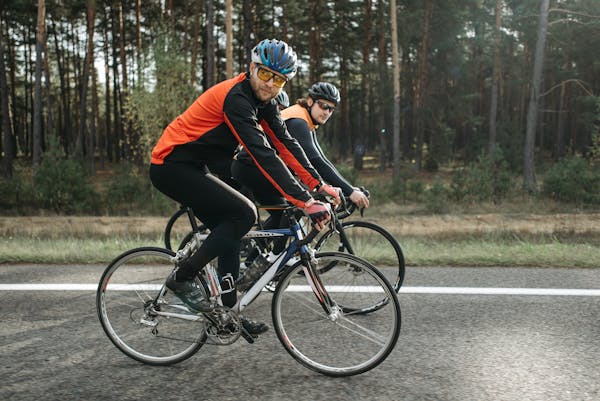
Bike Riding Safety
Riding safety is a major concern for outdoor cyclists. Wearing an ANSI approved bicycle helmet correctly is extremely important. Make sure it fits and is buckled on properly so it won’t fly off in an accident. A headlight and reflectors are critical so cars can see the rider at night or on cloudy days. Ride as far right and close to the curb as possible, to avoid being hit by a car. Learn traffic signals and obey all traffic laws. Consider wearing sunscreen and sunglasses when cycling outdoors to protect skin and eyes from the sun.
Pre-Ride Preparation:
Bike Maintenance
Ensuring your bike is in top condition enhances the enjoyment of your ride. If your bike has been unused for an extended period or if you’ve identified any issues, consider visiting your local REI Bike Shop or an independent bike shop for a professional tune-up. Alternatively, if you prefer a DIY approach, explore our Expert Advice article on bike maintenance, attend a class, or acquire a book that covers the fundamentals of bike maintenance.
Before embarking on a bike ride, ensure your bike is comfortable, safe, and prepared for the journey ahead. Here are some key checkpoints to consider, as demonstrated in our accompanying video:
Size: Confirm that the bike fits you properly, allowing for adequate clearance between you and the top tube. For road bikes, aim for 1″-2″ of space, while for mountain bikes, it should be 2″-4″.
Seat height: Adjust the saddle to the correct height based on your preference, ensuring comfort and proper pedaling posture. Personal preference dictates whether the saddle should be tipped forward, level, or backward. Proper saddle positioning is crucial for knee health, with the ideal setup ensuring a slight bend in your knee at the 6 o’clock pedal position.
Wheels: Verify that the quick-release levers or bolts (for older bikes) are securely fastened to prevent wheel mishaps during your ride.
Brakes: Test the brake levers to ensure the brake pads engage smoothly with the tire rims or rotors, facilitating effective braking when needed.
Rims: Lift the bike and spin the wheels to check for any wobbling or misalignment of the rims, which could affect ride stability.
Tires: Inspect the tires for cracks or excessive wear and ensure they are inflated to the recommended pressure on the sidewall.
Frame and headset: Examine the frame for any signs of cracks and check the headset by applying the front brake and rocking the bike back and forth. Excessive play indicates the need for headset adjustment, and riding with a cracked frame or loose headset is unsafe.
Gears: Shift through the gears to ensure smooth chain transitioning, facilitating efficient pedaling across various terrains.
Cranks: Test the tightness of the cranks, which connect the pedals to the bike, by giving them a firm pull. Loose cranks pose a safety risk and should be addressed before riding.
Chain: Ensure proper lubrication of the chain and check for any irregularities in movement by rotating the crank backward.
Resolve any concerns before beginning your ride.

Ensure Proper Helmet Fit
Wearing a helmet significantly reduces the risk of head and brain injuries, with helmets being 85%-88% effective in prevention. Additionally, in some jurisdictions, wearing a helmet is legally mandatory, and failure to comply may result in fines.
To ensure optimal protection, your helmet must fit correctly. Since heads vary in size, selecting the right-sized helmet is essential. For guidance on adjusting the fit, refer to our helmet-fitting video.
Here are the key steps:
- Adjust the fit dial or cinching mechanism for a snug yet comfortable fit. Add or remove interior pads if necessary.
- Position the helmet level on your head, approximately 1 or 2 finger-widths above your eyebrows. If it falls below or doesn’t reach just above the eyebrows, it’s either too big or too small.
- Adjust the straps so the slider rests just under your earlobe, where they form a “Y.”
- Ensure the buckled chin strap is snug, with no more than 1 or 2 finger-widths of space between your chin and the strap.
Perform final checks:
- Shake your head to ensure the helmet stays in place securely.
- You should be able to open your mouth wide without the chin strap pulling the helmet down.
Tip: When purchasing helmets for children, ensure a proper fit rather than buying a larger size for future growth, as proper fit is crucial for effective protection.
Conclusion:
Embracing cycling is a transformative choice, offering many advantages such as enhanced health, happiness, social connections, and beyond. To surely enjoy its benefits, resolve any concerns before beginning your ride. And as much as possible, consult professionals.
